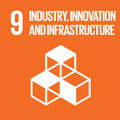- Docente: Federico Munari
- Credits: 6
- SSD: ING-IND/35
- Language: Italian
- Teaching Mode: In-person learning (entirely or partially)
- Campus: Bologna
-
Corso:
Second cycle degree programme (LM) in
Electrical Energy Engineering (cod. 9066)
Also valid for Second cycle degree programme (LM) in Mechanical Engineering (cod. 5724)
Learning outcomes
Students will learn the key concepts and techniques concerning the strategic management of innovation and the effective management of new product development processess. Students will also learn the key methods and techniques concerning project management
Course contents
Course contents
PREREQUISITES:
The understandings of the main concepts and techniques of general management represents an important prerequisite for the course (in particular for what concerns the techniques for the financial valuation of investments). The course will be held in Italian, however foreign students (i.e. Erasmus students) could complete the project work and give the final exam in English
MAIN TOPICS:
The course is divided into the following parts:
1. Project management: key definitions and principles.
2. Project lifecylce
3. Organizing for project management.
4. Strategy and project management.
5. Initiating a new project
6. Project planning: scope management
7. Project planning: time management.
8. Project planning: risk and cost management
9. Project monitoring and control
10: Managing R&D projects
11: Agile and lean project management in new product development
12: Design Thinking: key concepts and techniques
13: Intellectual Property Protection and Management
Readings/Bibliography
Readings/Bibliography
The readings for the course consist in a selection of chapters from the following books:
Capaldo, G., Volpe A. (2021), "Project Management (2nd edition", McGrawHill, Milano (capitoli: da 1 a 10 compresi)
Schilling, M.. 2013. (3 ed.) “Gestione dell’innovazione”, McGraw-Hill, Milano, Terza Edizione (capitoli: 3, 9, 11, 12)
Simon, P. 2016. “Introducing SCRUM”, Chapter 5 in “Analytics: the Agile Way”, John Wiley and Sons.
Brown, T. (2008). Design thinking. 2008. Harvard Business Review, June Issue.
Students attending the course lessons and completing the project work, can refer to a limited set of readings in the preparation of the final written exam, more specifically to the following set of readings:
- Capaldo, G., Volpe A. (2021), "Project Management (2nd edition", McGrawHill, Milano (capitoli: da 1 a 5 compresi, e capitolo 10)
- Schilling, M.. 2013. (3 ed.) “Gestione dell’innovazione”, McGraw-Hill, Milano, Terza Edizione (capitoli: 3, 9, 11, 12)
- Simon, P. 2016. “Introducing SCRUM”, Chapter 5 in “Analytics: the Agile Way”, John Wiley and Sons..
- Brown, T. (2008). Design thinking. 2008. Harvard Business Review, June Issue.
Teaching methods
Teaching methods
Seminars
Case-study discussion
Project work (group work)
Assessment methods
Assessment methods
The final assessment of the course consists in a written exam (approx duration: 2 hours) covering the whole program. Typically, the written exam involves the discussion of 2 short case-studies, and the discussion of 2 theorical questions on the program.
For students attending the lessons, it is possibile to substitute part of the final written exam (the discussion of 2 case-studies) by undertaking a project work (realization of a project plan for the development of an innovative product/service/software, and final presentation in-class). the project work will be conducted by group of students. The formation of the groups and the definition of the ideas for the project works will be defined in the first lessons of the course.
Office hours
See the website of Federico Munari
SDGs

This teaching activity contributes to the achievement of the Sustainable Development Goals of the UN 2030 Agenda.
